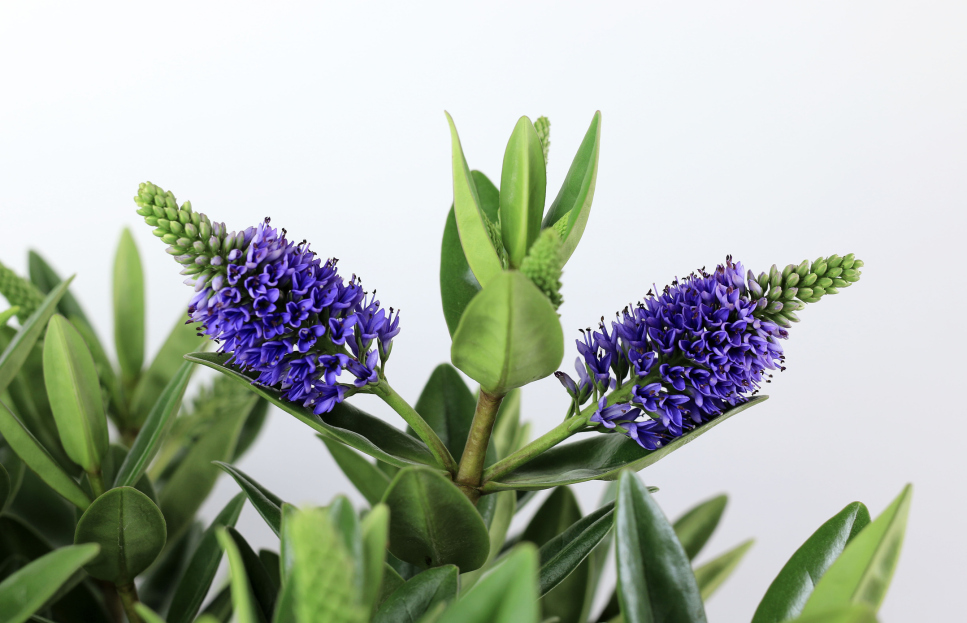
Looking for a low-maintenance plant that brings bold foliage and curb appeal to your garden year-round? Say hello to the Kiwi Hebe—a compact, evergreen shrub with vibrant variegated leaves and seasonal blooms that attract pollinators. With its pink-tipped foliage, creamy-white margins, and tight mounding shape, Kiwi Hebe adds instant charm to borders, containers, and mixed beds.
A member of the Hebe genus (pronounced HEE-bee), this cultivar originates from New Zealand and is well-suited to a variety of garden styles, especially those aiming for texture, color, and structure with minimal fuss.
Kiwi Hebe thrives in full sun to partial shade. For the brightest foliage colors—especially the pinkish tips—give it at least 4–6 hours of direct sun each day. In hotter climates, some afternoon shade can prevent leaf scorch.
In too much shade, the plant may become leggy and lose some of its vibrant color.
This shrub prefers consistent moisture, especially while establishing. Water regularly during dry spells but allow the soil to dry slightly between waterings. Once mature, Kiwi Hebe becomes somewhat drought-tolerant, though regular watering helps keep it looking lush.
Avoid soggy conditions, as Hebes dislike "wet feet" and are susceptible to root rot if overwatered.
Plant Kiwi Hebe in well-draining soil—a mix of loam and sand or a light garden soil works well. It doesn’t like heavy clay or poorly draining spots, especially during winter. If your soil retains water, amend it with compost, grit, or coarse sand.
It’s also a great candidate for containers, where you can control drainage and display its colorful foliage up close.
Kiwi Hebe doesn’t require much feeding. Apply a balanced, slow-release fertilizer in early spring to support new growth and bloom production. Avoid high-nitrogen fertilizers, which can lead to excessive leaf growth at the expense of flowers.
Hardy in USDA zones 8–10, Kiwi Hebe prefers mild winters and cool summers. It can tolerate light frost but should be protected from freezing temperatures with mulch or fleece if a deep cold snap hits.
If you live in a cooler climate, grow Kiwi Hebe in containers and bring it indoors or into a sheltered area during the winter.
Kiwi Hebe naturally maintains a neat, rounded shape, but you can give it a light trim in spring to encourage bushier growth. Deadhead spent flowers to keep the plant tidy and promote additional blooming.
Avoid heavy pruning into old wood, as Hebes don’t always regenerate well from hard cuts.
Though the main attraction is its foliage, Kiwi Hebe also produces small purple or pale lilac flower spikes in summer, adding an extra layer of visual interest. These flowers are beloved by bees and butterflies, making it a great choice for pollinator-friendly gardens.
The foliage remains colorful year-round, providing consistent structure and vibrancy even when other plants go dormant.
Generally pest-resistant, Kiwi Hebe can occasionally be bothered by aphids or spider mites, especially in dry indoor conditions. Treat infestations with insecticidal soap or a blast of water.
Root rot is the most common issue—caused by poor drainage or overwatering. Always ensure soil is light and drains well.
Kiwi Hebe is not known to be toxic to pets, but as with all garden plants, it's best to prevent excessive nibbling.